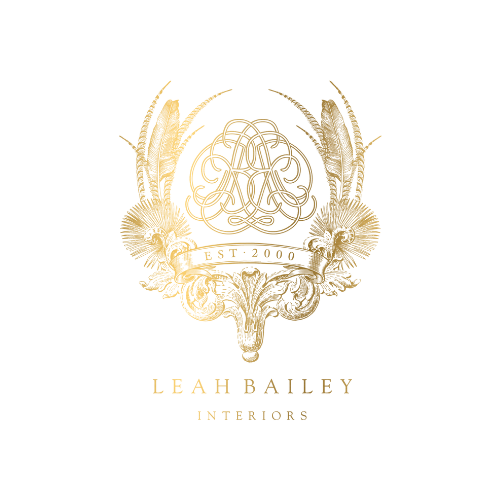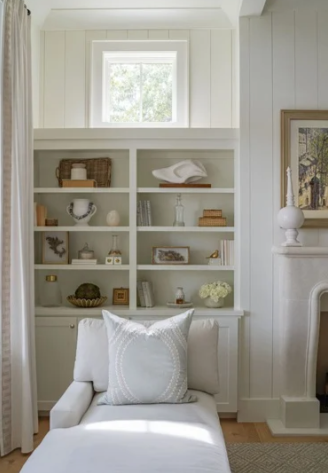The Importance of Processes, Procedures, and Systems here at LBI
In the world of interior design, creativity is the driving force that brings spaces to life. But behind every stunning transformation lies a backbone of meticulous organization and strategic planning. For interior design businesses, having robust processes, procedures, and systems in place is not just a luxury—it's a necessity. Here's why these elements are crucial for the success of Leah Bailey Interiors in the interior design industry.
Streamlined Operations
One of the primary benefits of well-defined processes and systems is streamlined operations. Interior design projects involve multiple stages, from initial consultations and concept development to procurement and final installation. Without structured processes, these stages can become chaotic and disjointed, leading to missed deadlines, budget overruns, and client dissatisfaction.
By establishing clear procedures for each phase of a project, we can ensure that every step is executed efficiently. This includes standardized methods for our client onboarding, project management, and quality control. Streamlining these operations helps maintain consistency and reliability, which are critical for building trust with clients here at LBI.
Enhanced Client Experience
In an industry where client satisfaction is paramount, having effective systems in place can significantly enhance the client experience. Processes for regular communication, feedback collection, and issue resolution help keep clients informed and engaged throughout the project.
Imagine a scenario where clients receive regular updates on project milestones, have access to a clear timeline, and can easily communicate their preferences or concerns. Such systems not only improve client satisfaction but also foster strong, long-term relationships. Happy clients are more likely to provide referrals and positive reviews, which are invaluable for business growth.
Efficient Resource Management
Interior design projects often require coordination of various resources, including materials, contractors, and team members. Processes and systems help manage these resources more effectively. For instance, a procurement system can track material orders and deliveries, ensuring that everything arrives on time and within budget. Similarly, scheduling systems can manage contractor availability and project timelines.
Efficient resource management reduces the risk of delays and cost overruns, allowing LBI to deliver projects on time and within budget. This not only improves trust but also enhances our reputation for reliability and professionalism.
Consistent Quality Control
Maintaining high-quality standards is crucial here at LBI, where the final outcome directly impacts client satisfaction. Standardized procedures for quality control help ensure that every aspect of the design meets or exceeds expectations. This includes checks at various stages of the project, from design drafts to weekly reporting on each item's ETA and location to final installations.
By implementing quality control systems, we can identify and address issues early, reducing the likelihood of costly rework or client complaints. Consistent quality not only enhances client satisfaction but also reinforces the LBI's brand as a leader in the industry.
Improved Team Collaboration
Interior design projects typically involve collaboration between multiple team members, including designers, project managers, and contractors. Effective processes and systems facilitate better teamwork by providing a clear structure for communication and task management.
For example, a project management system such as Studio Designer, can assign tasks, track progress, and ensure that everyone is on the same page. This reduces misunderstandings and overlaps, leading to a more cohesive and productive team.
Data-Driven Decision Making
In the competitive world of interior design, data-driven decision-making can set LBI apart from its competitors. Processes and systems help collect and analyze valuable data, such as project costs, client preferences, and market trends.
With access to this data, we can make informed decisions about pricing, design choices, and marketing strategies. For instance, analyzing past project data can help identify which design styles or materials are most popular with clients, enabling our team to tailor its offerings accordingly.
Scalability and Growth
As Leah Bailey Interiors grows, managing an increasing number of projects and clients could be more challenging. Well-established processes and systems provide a scalable framework that supports growth.
For example, implementing a client management system allows the firm to handle more clients without sacrificing service quality. Similarly, standardized design and project management procedures can be replicated across multiple projects, ensuring consistency as the business expands.
In the creative realm of interior design, processes, procedures, and systems may not be the most glamorous aspects of the business, but they are undeniably crucial. They provide the structure and efficiency needed to manage projects effectively, deliver exceptional client experiences, and support business growth. By investing in these foundational elements, Leah Bailey Interiors can enhance our operations, maintain high standards, and thrive in a competitive industry.



Leave a comment
This site is protected by hCaptcha and the hCaptcha Privacy Policy and Terms of Service apply.